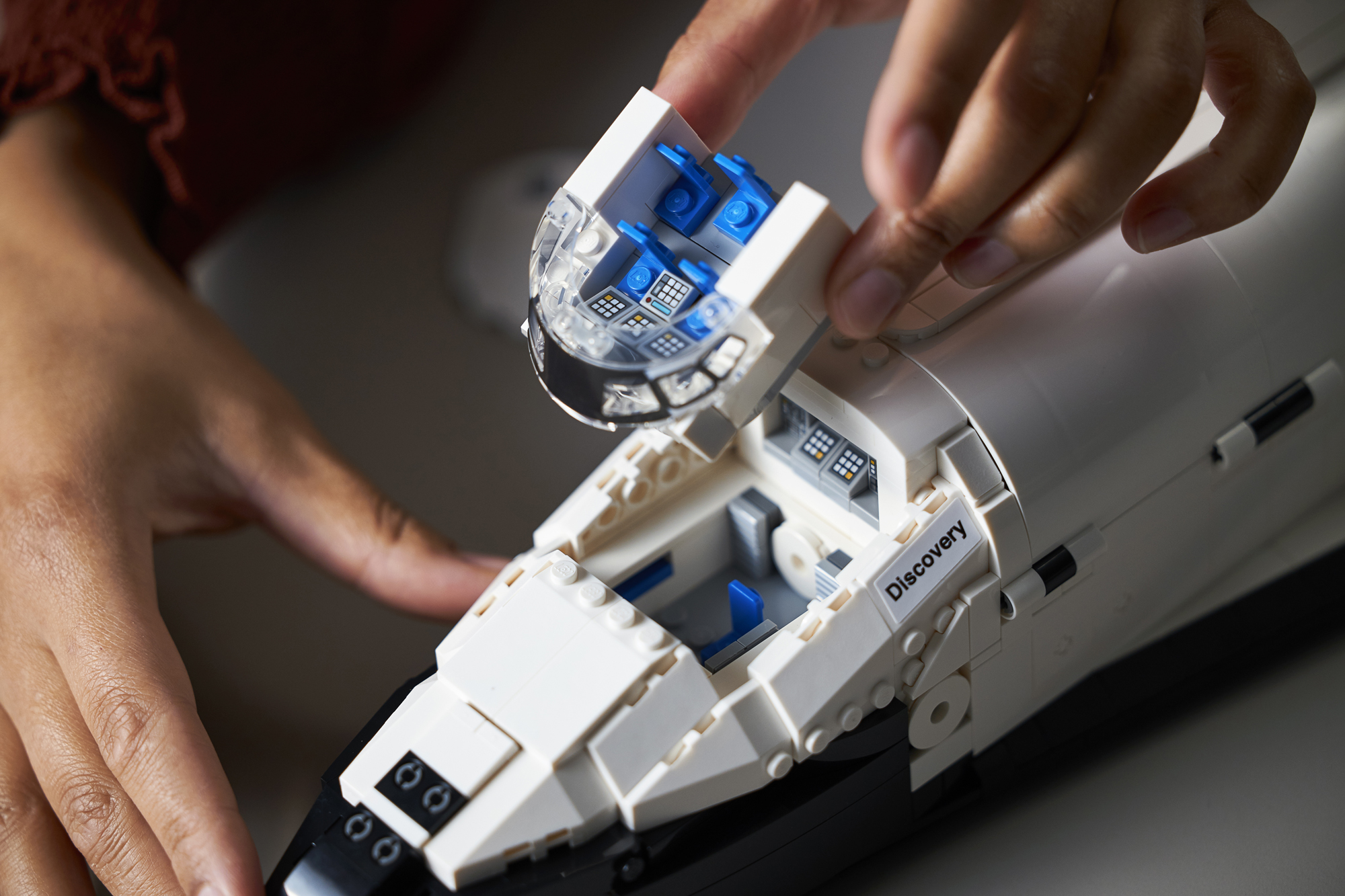This epic new Lego space shuttle set will let you recreate NASA's Hubble Space Telescope mission
This Lego space shuttle Discovery launches April 1 and looks amazing.

Prepare for liftoff, space fans, because soon you'll be able to recreate one of NASA's most famous shuttle missions in Lego form.
A new set from the building company recreates the STS-31 mission on space shuttle Discovery that launched the Hubble Space Telescope into orbit in April 1990. Crew members of the space shuttle Discovery deployed the observatory on what has become a multi-decade exploration of the cosmos.
The Lego Space Shuttle Discovery set (MSRP $199.99 USD) will be available directly from Lego stores and from Lego.com starting April 1. VIP members of Lego can also buy a replica of the Ulysses space probe, which orbited and studied the sun and was also deployed using the space shuttle. Limited stock of Ulysses is available, and it will cost 1,800 VIP points.
Related: The best space Lego sets and deals
What's inside the Lego shuttle Discovery
Included in the 2,354-piece set is both Hubble and the space shuttle, including details such as payload bay doors that open, functional landing gear and reflective stickers meant to showcase the cooling radiators the real space shuttle had. The completed set is roughly 8.5 inches by 14 inches by 22 inches (22 cm by 35 cm by 56 cm) and includes two stands and plaques, for both the orbiter and Hubble.
"I'm really impressed about the way Lego has thought about space stuff," STS-31 astronaut Kathyrn Sullivan, who has an early copy of the set in her house, told Space.com. "They clearly recognize — they know in their DNA — about fun, creativity, imagination and learning. They provide that in such a rich array of kits … and I think as you get older, there is a different kind of satisfaction in completing a set, because of the strong emphasis to what was real."






The set is targeted for the adult crowd, as opposed to numerous other space shuttle sets made for children in past decades. Sullivan herself didn't use Lego as a child, although she did use erector-type sets. She said the challenges of putting things together in the right way — even if you make a mistake during building — apply even during real-life space missions.
Breaking space news, the latest updates on rocket launches, skywatching events and more!
"A common adage in the astronaut corps is plans are nothing, but planning is everything," she said. "You get a group of people together to do a mission, and you do a lot of planning and you do write a plan. But you know full well that life doesn't always deliver the circumstances as you intended."
The unexpected happened to the engineers that built Hubble. Shortly after the telescope's deployment, a flaw in the optical system was found that forced an engineering fix to address the telescope's myopia. Another shuttle crew, STS-61, visited Hubble in December 1993 to install a corrective optics package, addressing the problem. Including that trip, five shuttle crews visited Hubble until 2010, performing maintenance and upgrades that should keep the telescope operating well into the 2020s.
Related: Lego's International Space Station model is out of this world
A Lego designer's NASA vision


Lego set designer Milan Madge grew up watching the space shuttle program from England, and used to play with Lego sets in the garden — perpetually dropping bricks in the grass, he told Space.com, to the frustration of his father who loved to make sets for him. Now based in Denmark, Madge said it was a creative challenge to build a realistic shuttle that would still hold together in Lego format.
"We went up to such a big scale for this model," Madge said. "We've done a lot of space shuttles in the past, around half a dozen, but they tended to be fairly small-scale to include the solid rocket boosters and the external tank ... the reason for going bigger is we wanted to capture lots of little details."
One of the toughest design challenges was the payload bay from where Hubble was stored and deployed during multiple shuttle missions. The payload bay needs to be hollow for maximum realism, but Madge's design team struggled at first with making sure the front and back would not fall off.
Creative strengthening of the middle section was finally deployed, not least to keep the landing gear working as well. "We also had to somehow link the front landing gear and the rear landing gear – and a landing function — through a hollow payload bay," Madge said with a laugh.
Madge added that he sees the shuttle as a "fresh expression of how we do space stuff," building on to previous recent Lego sets that featured the Saturn V moon rocket, the International Space Station and the Apollo 11 lunar module to high fidelity. "To go to this scale and target this adult market gives you a sense of the grandeur and the technical detail," he said of the new space shuttle.
Like most of these previous space sets, the space shuttle one commemorates a big anniversary; April 12, 2021 will be the 40th anniversary of STS-1's launch, the crewed mission that began the 135 flights of the space shuttle program.
Follow Elizabeth Howell on Twitter @howellspace. Follow us on Twitter @Spacedotcom and on Facebook.

Elizabeth Howell (she/her), Ph.D., was a staff writer in the spaceflight channel between 2022 and 2024 specializing in Canadian space news. She was contributing writer for Space.com for 10 years from 2012 to 2024. Elizabeth's reporting includes multiple exclusives with the White House, leading world coverage about a lost-and-found space tomato on the International Space Station, witnessing five human spaceflight launches on two continents, flying parabolic, working inside a spacesuit, and participating in a simulated Mars mission. Her latest book, "Why Am I Taller?" (ECW Press, 2022) is co-written with astronaut Dave Williams.

